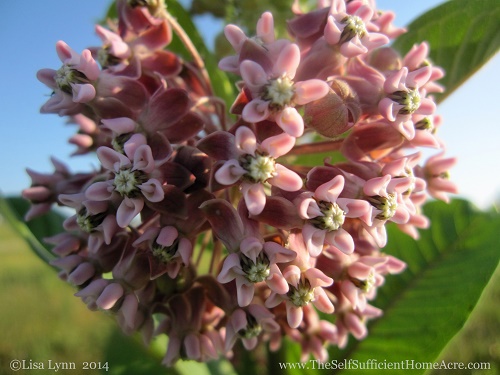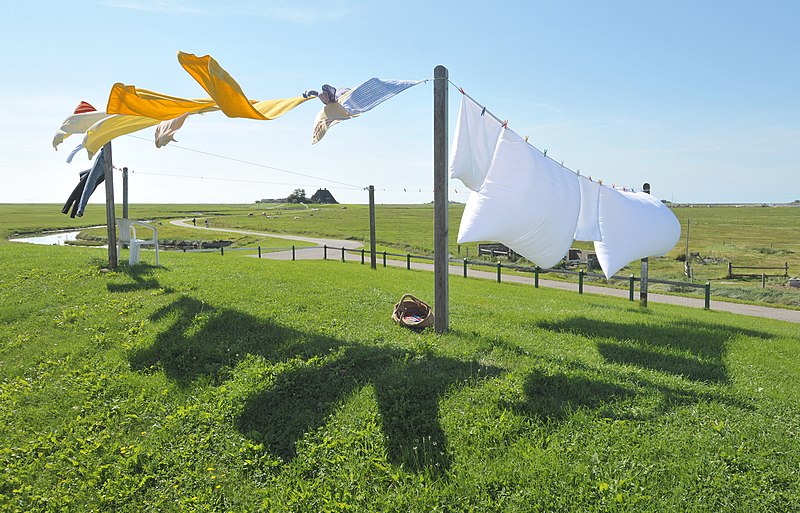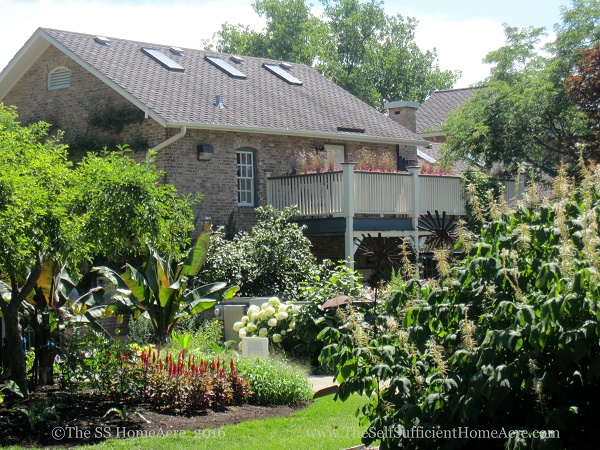Leaving Milkweed for Monarch Butterflies
I decided to start saving milkweed for the Monarchs. I like foraging for wild edibles, but I also like Monarch butterflies. And these beautiful creatures are in trouble. Habitat destruction and herbicide use are destroying the milkweed plants that Monarchs must lay their eggs on each year. For more information about conserving their habitat and saving the Monarch, check out this page on the U.S. Fish and Wildlife Service website. You can even report sightings in your area.
This page contains affiliate links. You will not pay any extra if you purchase products through these links, but I will receive a small commission. Thank you for supporting The Self Sufficient HomeAcre!
What Does This Have To Do With Foraging?
Common milkweed is a tasty wild edible. But I am finding it harder to collect enough to prepare for my family and still leave enough for the butterflies. So this year I decided not to collect any milkweed at all. I’ve planted some in the chicken pasture to help give the Monarchs more habitat and food sources in our area.
If you forage for wild edibles, please consider leaving most of the milkweed for the butterflies. You could also plant some milkweed on your property to provide a habitat for them. Contact your local parks department to see if they are participating in Monarch conservation projects. You can also order milkweed seeds from Save Our Monarchs or the following sources.
Have You Seen Any Monarchs Yet This Year?
They should be arriving in our area from their migration soon. Last year I saw only half a dozen or so Monarchs. When I was a kid there were so many you couldn’t count them all. I hope you will join in the effort to plant milkweed and save our butterflies!
Do you have milkweed growing near you? Do you eat it? If so, please check for Monarch eggs before harvesting and be sure to leave some for the Monarch Butterflies.
This site is a participant in the Amazon Services LLC Associates Program, an affiliate advertising program designed to provide a means for me to earn fees by linking to Amazon.com and affiliated sites. You will not pay any extra for these products and I’ll earn a small commission to help support this blog.








I’m just wondering what how you quantify “enough to prepare for my family and still leave enough for the butterflies”? Where I live there seems to be lots growing wild, but I haven’t been able to find specific guidelines for sustainable harvesting. In a meadow with hundreds of milkweed plants, for instance, where there are also hundreds of other nectar plants (joe-pye, asters), I’m wondering if harvesting one or two pods from each milkweed plant in the early fall would actually be problematic for monarchs. I’m guessing their uniquely milkweed-dependent egg-laying/caterpillar is over by fall? That’s just one example. Do you know of any specific guidelines for how much of which parts of the plant, at which point in the season, could be harvested without raising significant concern of stealing food from the mouths of monarchs? That would be really helpful!
Hi Lori,
I’m sorry I don’t have specific guidelines for sustainable harvesting. Harvesting the shoots has been my main concern here. I would check any shoots for eggs on the undersides of leaves before harvesting and leave half of the milkweed if you have a lot growing in your area. And I think that if you left half of the pods, that would be a good guideline to follow. The pods are really for planting a fresh supply for the future and not directly used by the caterpillars this year. And yes, the caterpillars should be done for fall if you live in a northern area.
Good question!
Lori, I came across an interesting document that includes a bit of information about harvesting milkweed. The context of the article is related to mature ripe seed pods but I think it would also apply to collecting fresh new seed pods.
“Finally, it is important to avoid depleting wild populations by overharvesting seed. A recommended guideline is to collect no more than 20% of the seeds within a population on any given day (Bureau of Land Management 2012).”
Source: https://www.xerces.org/wp-content/uploads/2014/06/Milkweeds_XerSoc_june2014.pdf
Thanks for sharing this, Brad!
Thank you Lisa and Brad! Very helpful info.
No problem, Lori!
we don’t have any milkweed yet, but we did plant Joe Pieweed and the monarchs love it. have seen many this year
Hi Bill,
The Joe Pieweed is a very good food source for the adult monarchs…that’s great that you planted some! The milkweed is the only plant that they will lay their eggs on as a food source for the caterpillars. So if you have a chance to plant some of that too, you’ll have even more monarch 🙂
I’m on the prowl for milkweed to plant. I do have to be very careful though where i plant it as we have dogs and milkweed is highly toxic to dogs
That’s good information to know, Bill…thanks for sharing. I have dogs and one of them will eat pretty much anything! I’ll have to be more vigilant when we go for walks 😉
The milkweed pods will be ready soon for saving the seeds and planting. Hope you can find some freebies to plant in safe areas! Thanks for stopping by!
I found a whole bunch of milkweed growing by the railroad tracks today. Alot of the pods had dried and split open, but not discharged the seeds. I clipped a few pods and will dry them a bit more before potting se and saving others.
Bill
That’s great! If you have friends who are interested, you could share a few 🙂 A wonderful find!
First I just wanted to thank you for the 121 blog hops you sponsored for us! You are truly a blessing! And about the butterfies…oh, my, I do notice they are not nearly as plentiful as they used to be. I had no idea why, but this is so sad. Every now and then, we will see one around our front porch. Right after my dear mother died, one came up and landed on some flowers that a friend had sent to me, that the delivery person had left on our front porch. It seemed I was seeing monarchs during that time, and it always felt like a “sign” from Mom. These days, I seldom see one. I will be more mindful of the milkweed, now that I know this. Thanks for all you do!
Dear Cheryl,
I’m so sorry to hear about your Mother. 🙁
I’m happy to have had the wonderful experience getting to know so many bloggers through the hop! Thank you for your kind words!
I’m glad that I could share this information so that you can spread the word too, and maybe with all of the wonderful people who care we can make a difference. Thanks so much for stopping by and letting me know that this post was worthwhile!
Reno, NV the milkweed is growing quickly. I do not eat it but I do grow my own and observe it in the area near me. I saw and reported a monarch sighting on May 5th but most monarchs should arrive in June. I support your decision to let the caterpillars eat all of them this year.
Thank you Brad…I hope all of the milkweed is free of pesticides so the butterflies are healthy!
It’s nice to see another forager give up milkweed. I know most people forage sustainably, but milkweed is best left completely alone for now. I stopped following some of my favorite foraging blogs after their recent posts advocating the consumption of milkweed. There are so many edibles available this time, it just isn’t necessary.
Hi Hippiechic…I couldn’t bring myself to pick any. It is very good, but I want to see if I can get a nice sized patch growing on our property before I harvest any more. Thanks for stopping by…sorry to hear that the other bloggers haven’t paid attention to this news.